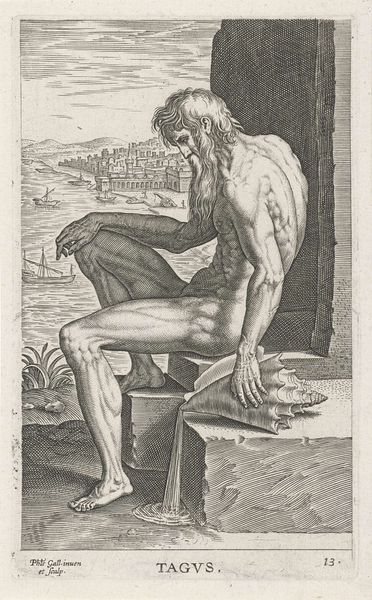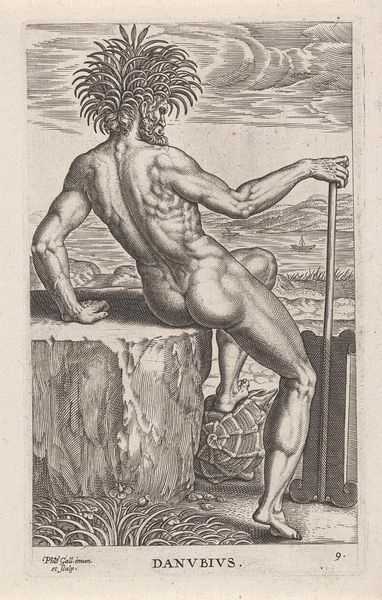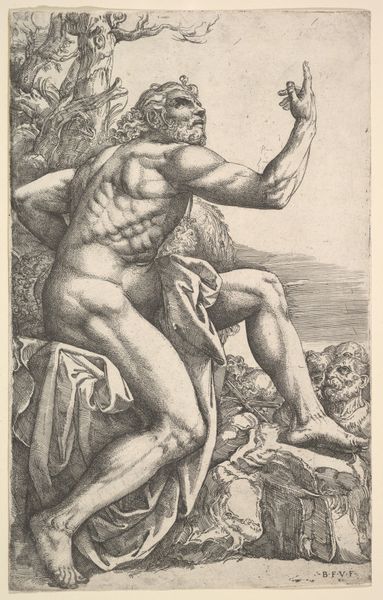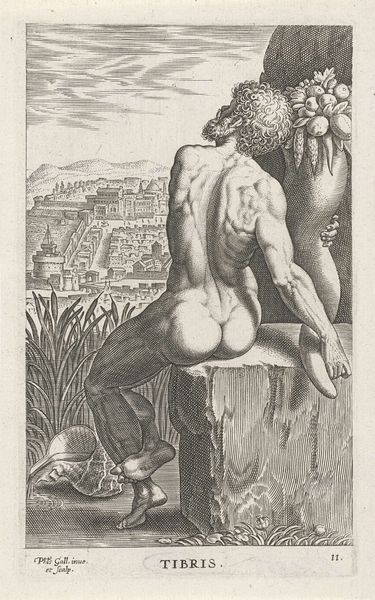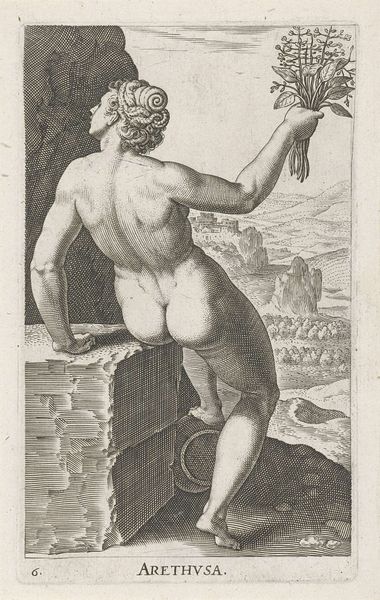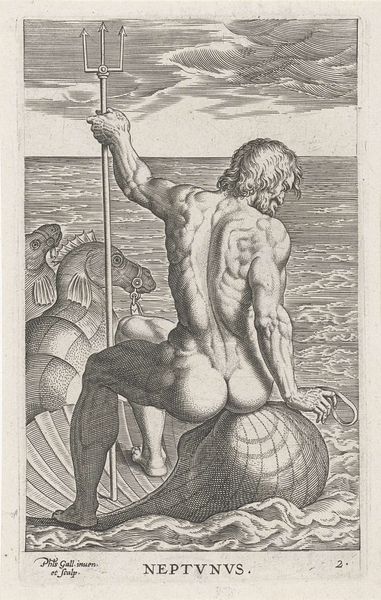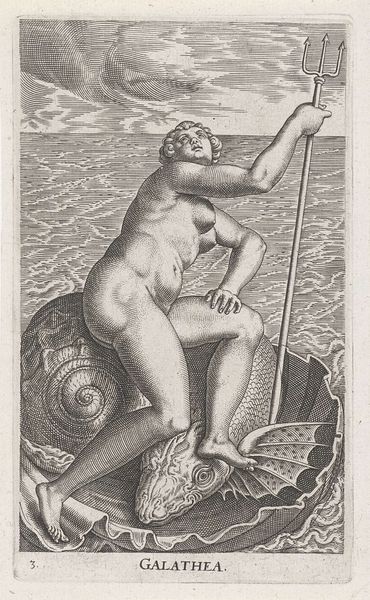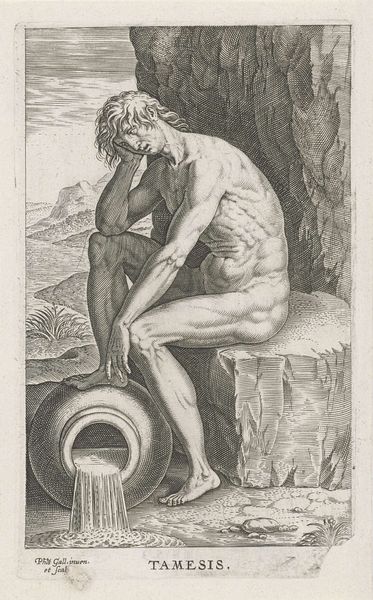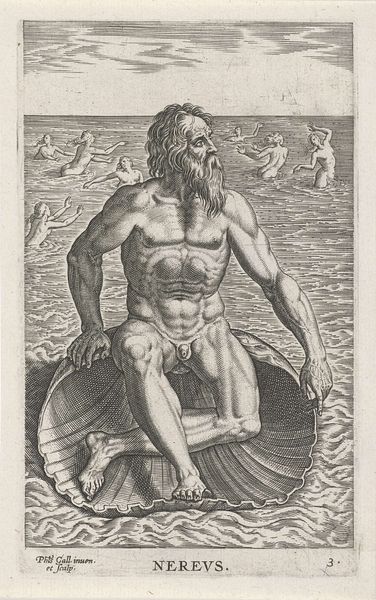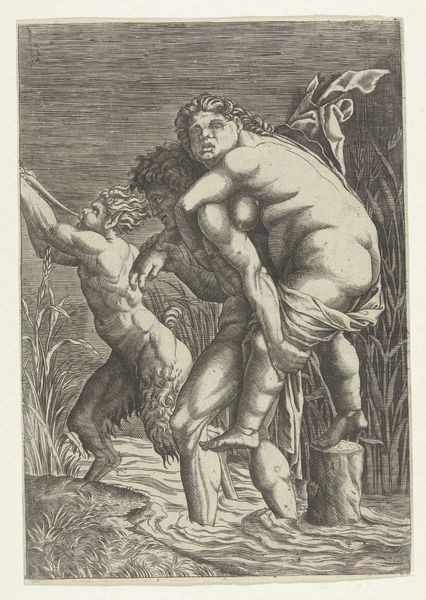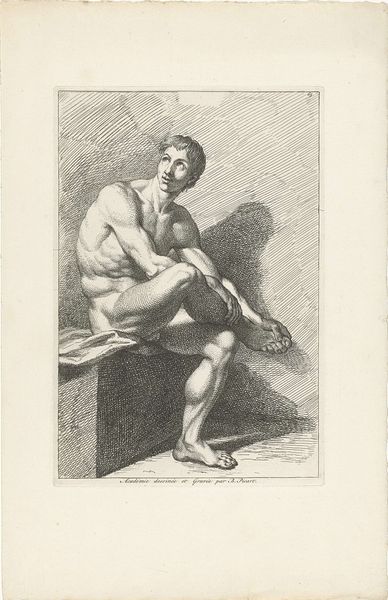
print, engraving
# print
#
landscape
#
mannerism
#
figuration
#
history-painting
#
engraving
Dimensions: height 165 mm, width 102 mm
Copyright: Rijks Museum: Open Domain
Philips Galle made this engraving of Zeegod Protheus in the late 16th century. The image depicts Proteus, a Greek sea god known for his ability to change shape, surrounded by fish and other sea creatures, with a distant city visible in the background. But what did this image mean to its early viewers? Made in the Netherlands, this print reflects the cultural fascination with classical mythology during the Renaissance. The detailed rendering of the human body and the naturalistic depiction of the marine life demonstrate Galle’s skill as an engraver but also reflect broader artistic trends emphasizing realism and the study of nature. More than this, however, the image represents the complex relationship between humanity and the natural world. As the Dutch Republic expanded its maritime trade routes, the sea became both a source of wealth and a realm of danger and mystery. The figure of Proteus, a shape-shifting god of the sea, could symbolize the unpredictable forces of nature. Today, scholars use sources such as emblem books and mythological dictionaries to understand the meaning and significance of this image in its original context.
Comments
No comments
Be the first to comment and join the conversation on the ultimate creative platform.
